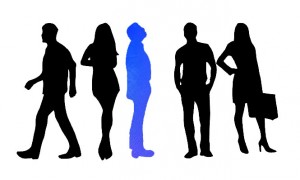First Year Integrative Seminar 1
Professor Rory O’Dea
18 September 2015
Bridge Assignment #3
Invisible Man by Ralph Ellison
In the beginning of the reading, the narrator derives his invisibility to being ignored. “When they approach me they see only my surroundings, themselves, or figments of their imagination — indeed, everything and anything except me.” (Ellison) The narrator feels like when people see him, they see right through him as if he doesn’t exist. It then becomes into anger because when someone finally sees him and notices him, it isn’t in the way he wants to be perceived. A man on the street begins to insult him and call him names, and he becomes violent and beats up the man until the man takes back what he says. “I pulled his chin down sharp upon the crown of my head, butting him as I had seen the West Indians do, and I felt his flesh tear and the blood gush out, and I yelled, “Apologize! Apologize!” But he continued to curse and struggle, and I butted him again and again until he went down heavily, on his knees, profusely bleeding.”(Ellison) But towards the end of the story, he reveals that he finds some peace in being invisible. He enjoys being in the comfort of his hole surrounded by 1,368 lights where he can see himself. He seems content with getting free electricity and listening to his radio phonograph. I truly relate to the narrator and his feeling of invisibility. For most of my life, I felt invisible but in the sense that I fit in with the crowd. I wasn’t being myself and in result, I became just another person in a sea of people. I was ordinary. It wasn’t until I began to start doing what I wanted, dressing how I wanted, speaking my mind that I began to stand out and shine. Because of that, people were able to see me, and I was able to see myself.

